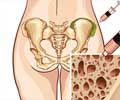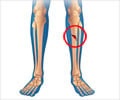Glossary
Red blood cells: Cell specialised for oxygen transport, having a high concentration of haemoglobin in the cytoplasm.White blood cells: cells which circulate in the blood and lymphatic system and harbor in the lymph glands and spleen. They are part of the immune system responsible for both direct and indirect immune response to fight against foreign invaders of the body.
Platelets: Platelets are found in the bloodstream that binds to fibrinogen at the site of a wound to begin the blood clotting process
Stem cells: Cells that gives rise to a lineage of cells. Particularly used to describe the most primitive cells in the bone marrow from which all the various types of blood cell are derived
Chromosome: The self-replicating genetic structures of cells containing the cellular DNA that bears in its nucleotide sequence the linear array of genes.
Osteomyelitis: Inflammation of bone caused by microorganisms. It may remain localised or may spread through the bone to involve the marrow, cortex, cancerous tissue and periosteum.










In 2002 I had marrow removed for anterior spinal fusion surgery. As I've been getting older, pain has been getting stronger from the removal site. Lower back hip area. I don't understand how that could be. I'm 61yro now. Any suggestions would be appreciated.